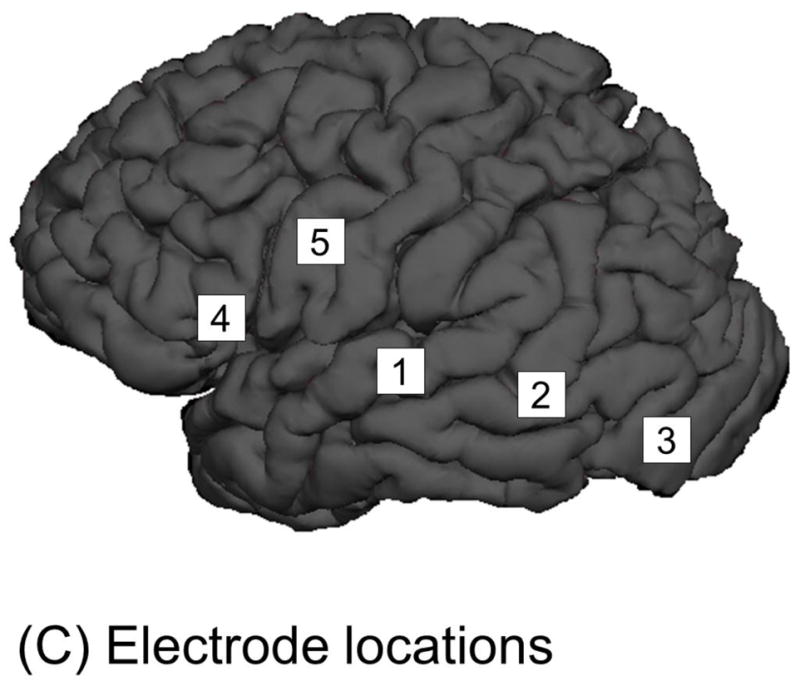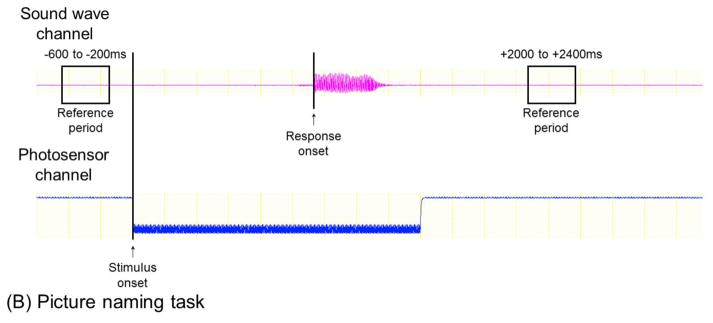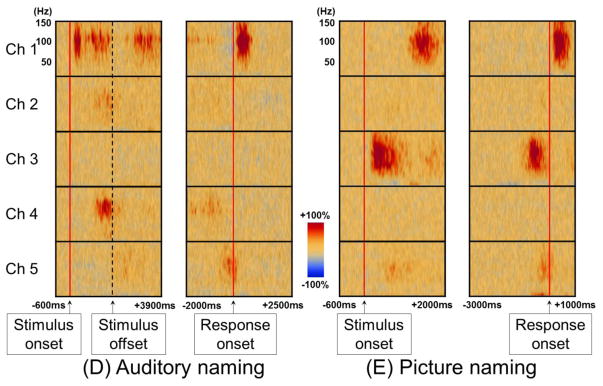Figure 4. Time-frequency analysis to measure auditory and picture naming-related high-gamma augmentation.

A 12-year-old boy was assigned auditory and picture naming tasks. (A) For analysis of auditory naming-related high-gamma activity, stimulus onset and response onset are visually marked using sound-wave signals integrated into ECoG recording. Users of our standardized auditory stimuli (Supplementary documents S1–S7) do not have to manually mark stimulus offset, since all stimuli have 1.8-s duration. For analysis time-locked to stimulus onset, one can define a period 200–600 ms prior to stimulus onset as the reference (Kojima et al., 2013b). For analysis time-locked to response onset, one can define a silent period of 400 ms several seconds after response onset. We make sure that the defined reference period between trials are not affected by unwanted noises. (B) For analysis of picture naming-related high-gamma activity, response onset is determined using sound-wave signals. Stimulus onset is determined using a deflection of photosensor signal (Figure 3C; Video S1). (C) The locations of subdural electrodes are denoted. (D) The spatial-temporal dynamics of auditory naming-related high-gamma activity is presented. High-gamma augmentation at Channel 2 in the left middle-temporal gyrus is better appreciated in the analysis time-locked to stimulus onset/offset, whereas that at Channel 5 in the precentral gyrus is best seen in that time-locked to response onset. (E) The spatial-temporal dynamics of picture naming-related high-gamma activity suggests that the picture naming task barely elicited high-gamma modulation at Channel 4 in the inferior-frontal gyrus.



